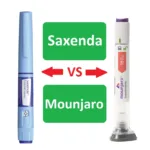The Slogan for World Aids Day this year (2022) is “Equalize”. It is marked to identify and address the inequalities patients with HIV and AIDs face these days.
HIV is a huge stigma. People with HIV face a lot of mental and social issues apart from their medical issues.
I still remember people with HIV who got admitted to our medical ward had a label attached to their bed that read “HIV Positive“.
This was like a “shame on you” label. Later HIV label was discarded and patients were labeled “PLHIV” meaning people or persons living with HIV. This minimized the stigma to some extent but still, the label was not required.
Similarly, the “HIV clinic” of our hospital was named a “Special Clinic“. Now we have an infectious disease ward that has all the patients with HIV and other patients with resistant infections.
World Aids Day 2022: Let’s put an end to the inequalities:
HIV (Human Immune Deficiency Virus) infection is a viral infection, just like viral influenza and other viral infections. It attacks the immune system, primarily the T-helper cells, and makes a person immune-deficient.
When the immunity drops, we call it AIDS (Acquired immune deficiency syndrome). A person is said to have AIDS when the CD4 counts drop to less than 200/ul.
At this stage, the person is prone to develop opportunistic infections such as Tuberculosis, and fungal, viral, and bacterial infections.
Other infections can also cause immune deficiency but that is transient or treatable and is not associated with a social stigma.
Another reason for the social stigma is the mode of transmission of HIV. HIV is primarily transmitted by the sexual route after unprotected sexual intercourse.
Other infections that are more commonly transmitted via the sexual route are:
- Herpes
- Gonorrhea
- Syphilis
- Bacterial vaginosis
- Hepatitis B and C
- Chlamydia
- HPV or genital warts
Even infections such as the Zika virus and Ebola viruses can transmit via sexual intercourse.
However, all these infections are not associated with any social stigma. Diseases like syphilis, gonorrhea, and chlamydia are primarily transmitted via sexual intercourse just like HIV.
HIV is treatable nowadays, although it is not curable. But there are other conditions too that are not curable.
So why there is a stigma? Why people with HIV are looked to and treated differently?
| You may also like to read: |
Why HIV is a social stigma?
The three main reasons I think people consider HIV as a social stigma are tabulated here.
For comparison, I have put forth conditions with similar manifestations to advocate why it should not be a social stigma.
Why HIV is a Social Stigma | Why HIV shouldn’t be a social stigma |
| HIV is spread by sexual contact | Other diseases that are spread by sexual contact but are not considered a stigma are:
|
| HIV makes a person immune-deficient | Other conditions that can make a person immune deficient are:
|
| HIV is not curable | There is a long list of incurable diseases. Some are mentioned here:
|
HIV does not spread by physical contact. It does not pass on to people through kissing.
Apart from sexual intercourse (Anal and Vaginal), HIV also spreads from infected people to non-infected people via:
- Sharing needles such as injections from quacks and drug abusers.
- Vertical transmission (from mother to baby)
- Breastfeeding
- Needle-prick injuries as in healthcare workers
- Blood transfusions of unscreened blood products
- Organ donations.
In conclusion:
HIV-infected patients should not feel isolated for the reasons mentioned above. Treatment is available to control the disease process at an early stage.
With treatment, the rates of transmission may fall to “zero”. However, adherence to lifelong treatment is essential.
Just like asthmatics and diabetics take regular pills to control their disease, HIV-infected patients should also continue taking their medications and not feel shy about their illnesses.
| You may also like to read: |




